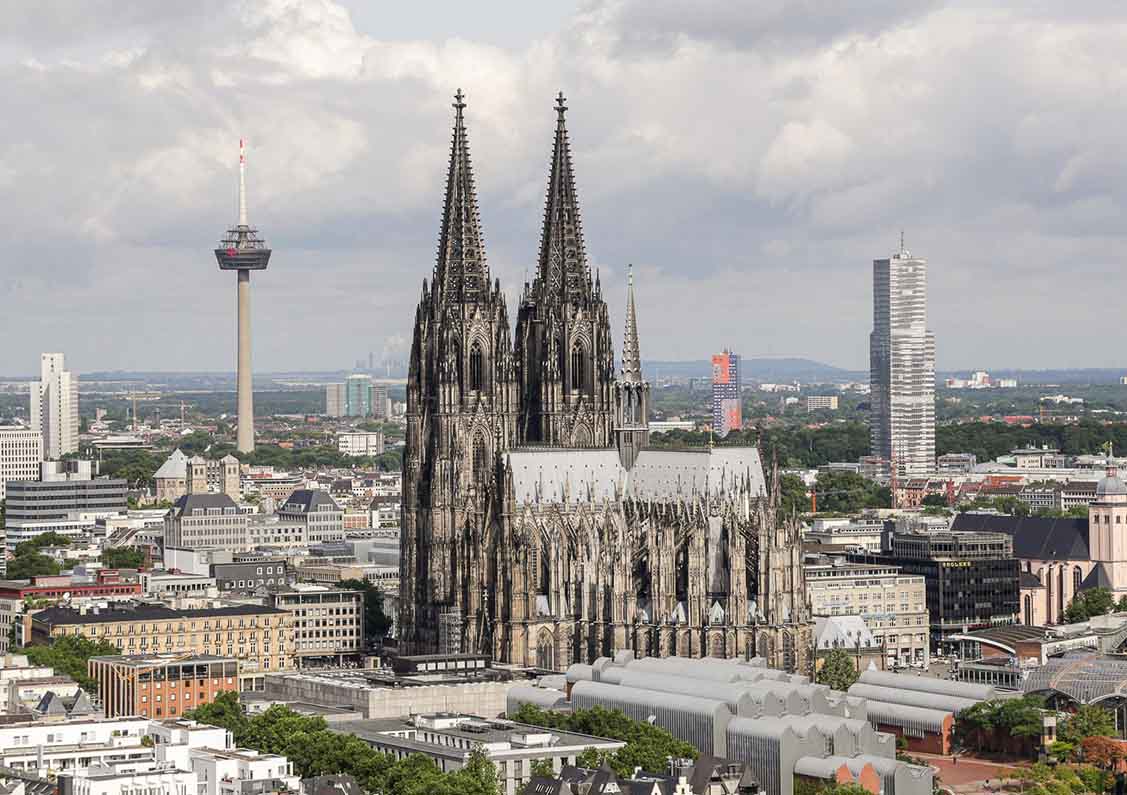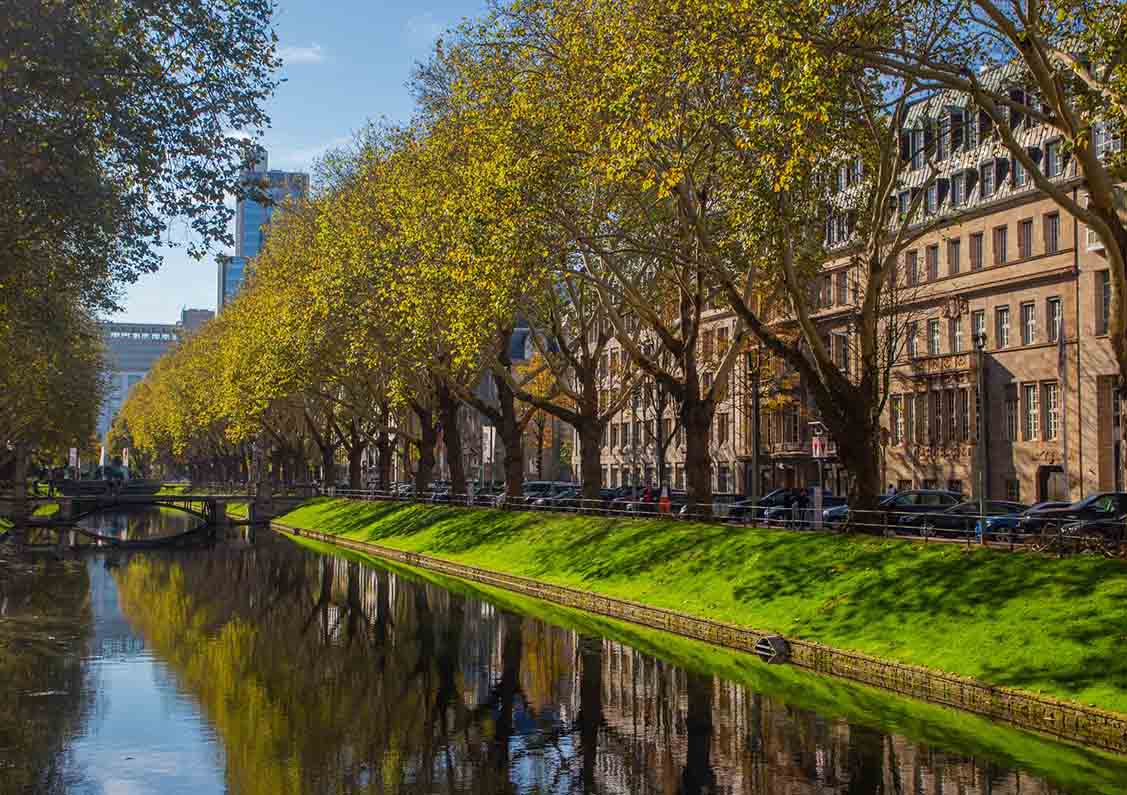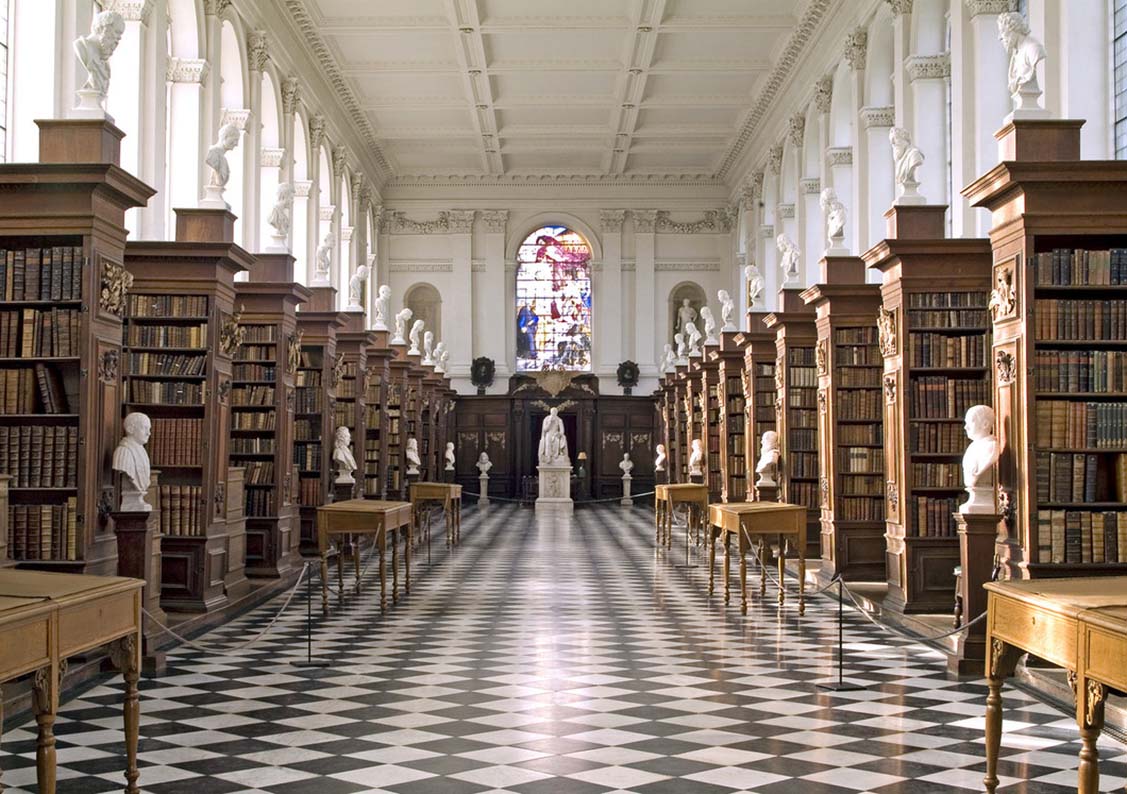The Cologne Cathedral (Kölner Dom), one of Germany’s most famous buildings, is not only a symbol of the city of Cologne but also a part of the world’s cultural heritage. Every year, millions of tourists from around the world visit Cologne, standing in front of this magnificent cathedral, gazing at its towering spires and intricate sculptures, feeling the weight of centuries of history and culture. The Cologne Cathedral is more than just a religious structure; it carries countless stories and has witnessed the changes in European history.
1. The Historical Origins of the Cologne Cathedral
1.1 The Starting Point of its Construction: From Medieval Dreams
The construction of the Cologne Cathedral dates back to 1248. At that time, the Archbishop of Cologne decided to build a grand new cathedral on the foundation of the existing church, to accommodate the growing number of believers and to serve as the center of Christian religious activities. This plan was proposed during the peak of the Gothic architectural style, and the original purpose of the construction was not only religious but also to highlight Cologne’s importance as a religious and political center in Europe.
Despite the grand design and ambitious plan, the construction of the Cologne Cathedral progressed slowly due to limitations in technology and funding. In the 15th century, the building process came to a halt because of financial shortages and the effects of war. It wasn’t until the mid-19th century that the restoration work resumed. During this period, the rising nationalism in Germany made the completion of the cathedral a symbol of the German people’s desire for unity and revival.
1.2 Completion and Recognition as a World Heritage Site
The Cologne Cathedral was finally completed in 1880 after more than 600 years of construction. The completion of the cathedral became a source of pride not only for Cologne but also for all of Germany. It is not only Germany’s most famous Gothic building but also one of the most magnificent cathedrals in the world. In 1986, the Cologne Cathedral was listed as a UNESCO World Heritage Site, further cementing its significance in global historical and cultural contexts.
2. Architectural and Artistic Features of the Cologne Cathedral
2.1 A Model of Gothic Architecture
The Cologne Cathedral is a classic example of Gothic architecture, with the hallmark features of Gothic style fully showcased in this magnificent building. Gothic architecture originated in 12th-century France and quickly spread throughout Europe. Its characteristics include soaring spires, flying buttresses, large stained-glass windows, and intricate sculptural decorations.
The most notable feature of the Cologne Cathedral is its two spires, which stand at 157 meters high, making them the tallest twin spires in the world. These spires are visible from anywhere in the city of Cologne and have become the symbol of the city. In addition to the towering spires, the exterior of the cathedral is adorned with exquisite carvings and reliefs that depict biblical stories, angels, and saints. Particularly on the cathedral’s west facade, there are over 1,000 statues, intricately carved, that illustrate the remarkable skill of medieval artists.
2.2 Exquisite Stained-Glass Windows
The stained-glass windows of the Cologne Cathedral are another stunning artistic treasure. These windows mostly depict significant events in Christian history and Bible stories, rich in color and deep in meaning. The most famous of them is the “Last Judgment” window, which spans a huge area and portrays the entire process from the creation of the world to the final judgment. Through these colorful windows, the biblical stories are vividly presented to both believers and visitors.
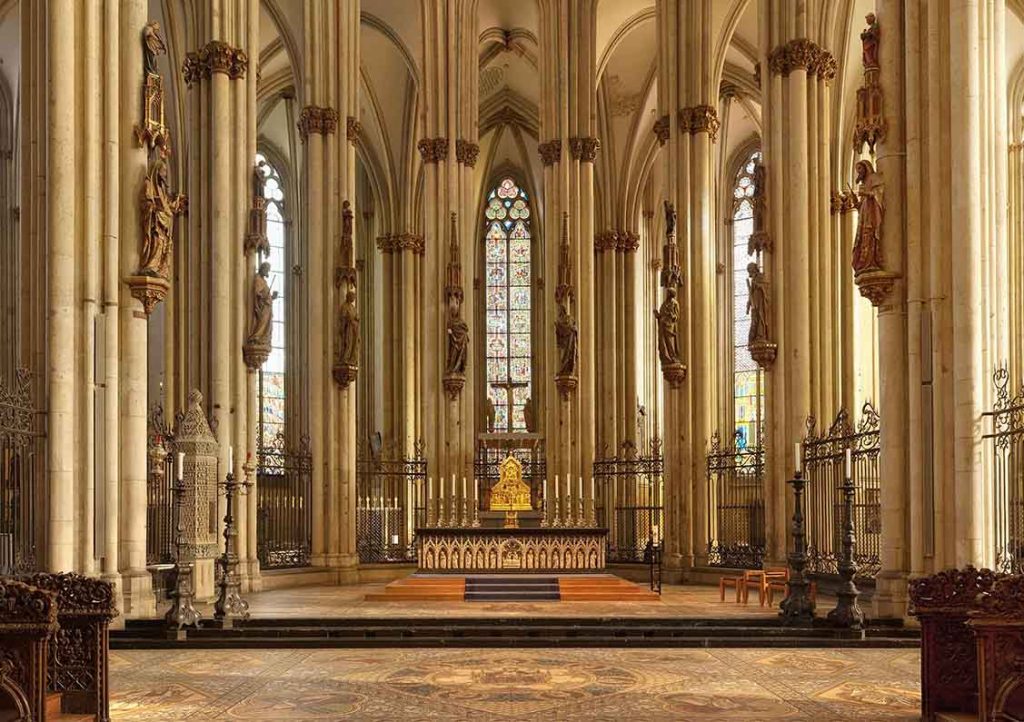
2.3 Altars and Interior Decorations
The interior of the cathedral is equally rich in artistic treasures, with the central high altar being one of the most remarkable features. This altar, in typical Gothic style, is solemn and simple, surrounded by many splendid carvings that emphasize the sacredness of religion. The cathedral’s interior decorations are rich in detail, including wood carvings, copper sculptures, and other religious symbols, all expressing Christian faith and doctrine. Additionally, the cathedral houses many well-preserved medieval frescoes and sculptures, attracting art enthusiasts from all over the world.
3. Religious Significance of the Cologne Cathedral
3.1 A Religious Sanctuary: Symbol of Sanctity and Devotion
As one of Germany’s most important religious buildings, the Cologne Cathedral is the seat of the Archbishop of Cologne and the cathedral of the Cologne Archdiocese. The cathedral is not only a place of worship but also a spiritual home for the people of Cologne and European believers. It has witnessed countless religious ceremonies, pilgrimages, and celebrations. Every year, thousands of pilgrims come to the Cologne Cathedral to seek divine protection and blessings.
3.2 Relics and Pilgrimage
The Cologne Cathedral houses one of Christianity’s most important relics: the remains of the Three Kings (the Magi). According to tradition, these three wise men from the East brought gifts to honor the birth of Jesus, and their remains were eventually placed in the cathedral. This relic has become one of the key symbols of the cathedral and attracts countless pilgrims who come to pay homage. Every year, thousands of believers and tourists visit to venerate this sacred relic, making the Cologne Cathedral an important destination for European pilgrimage.
4. The Cultural and Social Impact of the Cologne Cathedral
4.1 A Cultural Center and Historical Witness
The Cologne Cathedral is not just a religious symbol; it has profoundly influenced German and European cultural history. It is not only the pinnacle of Gothic architectural art but also a witness to the cultural heritage from the Middle Ages to modern times. As an important German cultural heritage, the cathedral has been a witness to many historical events. Whether it’s the celebrations of German unification or major religious events in Europe, the Cologne Cathedral has borne witness to these key moments in history.
4.2 The Cologne Cathedral and the City’s Development
The Cologne Cathedral has had a far-reaching impact on the city beyond the religious realm, playing a key role in the modern development of Cologne. As one of Germany’s most popular tourist attractions, the Cologne Cathedral draws millions of visitors every year, making it a cornerstone of the city’s tourism industry. In addition to religious pilgrimages and cultural visits, the cathedral’s influence has also indirectly promoted the growth of commercial and infrastructure developments in the city. The area surrounding the cathedral has become a cultural and commercial hub, with many historic shops, restaurants, and cafes that attract visitors. Retail, dining, and cultural industries have flourished around the cathedral, further boosting Cologne’s economic growth. Moreover, the cathedral adds cultural and historical value to the surrounding architecture and areas, making this region not only a tourist hotspot but also an integral part of daily life for the people of Cologne. Thus, the Cologne Cathedral has become a significant driving force behind both the cultural and economic prosperity of the city.
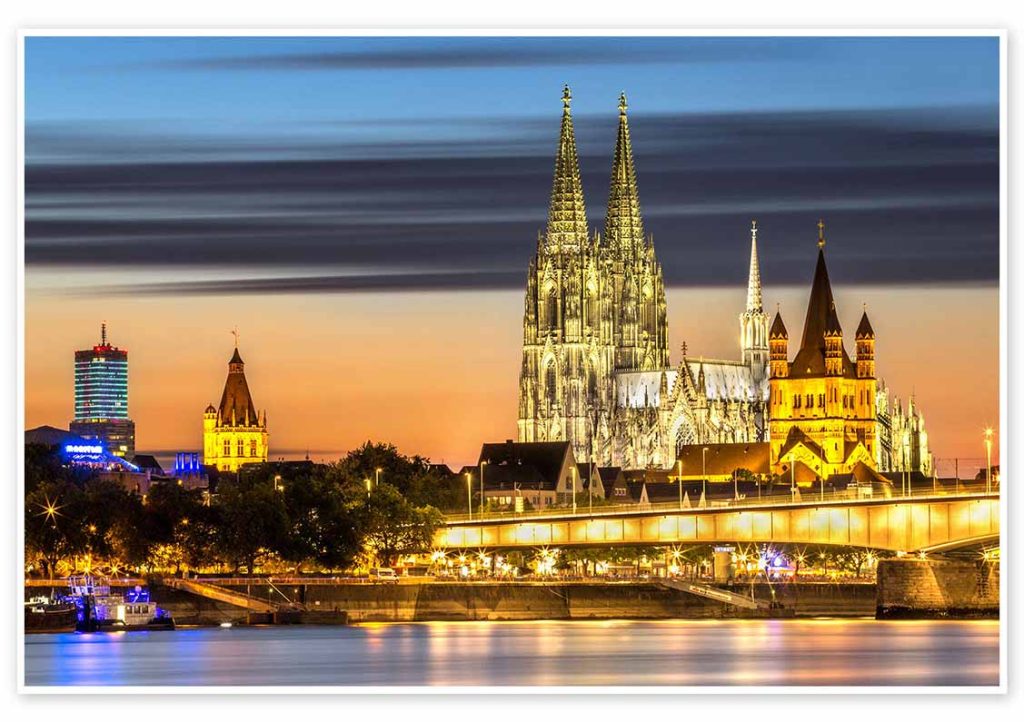
5. Visiting the Cologne Cathedral
5.1 Visiting Tips and Tourist Activities
Visiting the Cologne Cathedral is not only a religious experience but also a chance to explore German history and culture. Visitors can plan their visit in advance by checking the official website of the cathedral, where they can find information about opening hours, guided tours, and special events. The cathedral offers detailed guided tours, allowing visitors to delve into the cathedral’s historical background, architectural structure, artistic treasures, and religious significance. Visitors can also explore the cathedral’s museum, which houses a wealth of valuable religious art, documents, and historical relics. Additionally, the cathedral’s tower is a must-visit feature. Visitors can climb the tower and enjoy a panoramic view of the city of Cologne. Although the climb involves several hundred steps, once at the top, the magnificent view of the city, including the old town and the Rhine River, is truly unforgettable. For those who appreciate history and architecture, the Cologne Cathedral is undoubtedly a destination not to be missed.
5.2 Worship and Religious Activities
For the faithful, the Cologne Cathedral is not just a tourist attraction but also a sacred site where they can participate in religious ceremonies and pilgrimages. The cathedral holds regular masses and services every day, offering the opportunity for believers to experience solemn religious rituals and feel the devout atmosphere of Christianity. During special religious holidays or celebrations, such as Christmas Mass or Easter Mass, large-scale religious activities are held, attracting thousands of believers to join. These activities not only hold deep religious significance but are often accompanied by beautiful sacred music, making each service filled with reverence. Even visitors can quietly observe and experience the sacred atmosphere, as long as they respect the religious traditions. The Cologne Cathedral provides an ideal space for those who seek inner peace during their travels, offering a place to experience both the history and the profound impact of religious faith.
The Cologne Cathedral is more than just a church; it is a symbol of history, a masterpiece of architectural art, and a cultural treasure of Germany. Through the passage of time, it has carried countless stories and emotions, becoming a spiritual home for both the people of Cologne and visitors from around the world. Every visitor who steps into the cathedral will be deeply captivated by its mysterious atmosphere and stunning architectural beauty, leaving an unforgettable impression. In this cathedral, we not only feel the reverence and sanctity of religion but also experience the glory of history and the enduring nature of culture.
